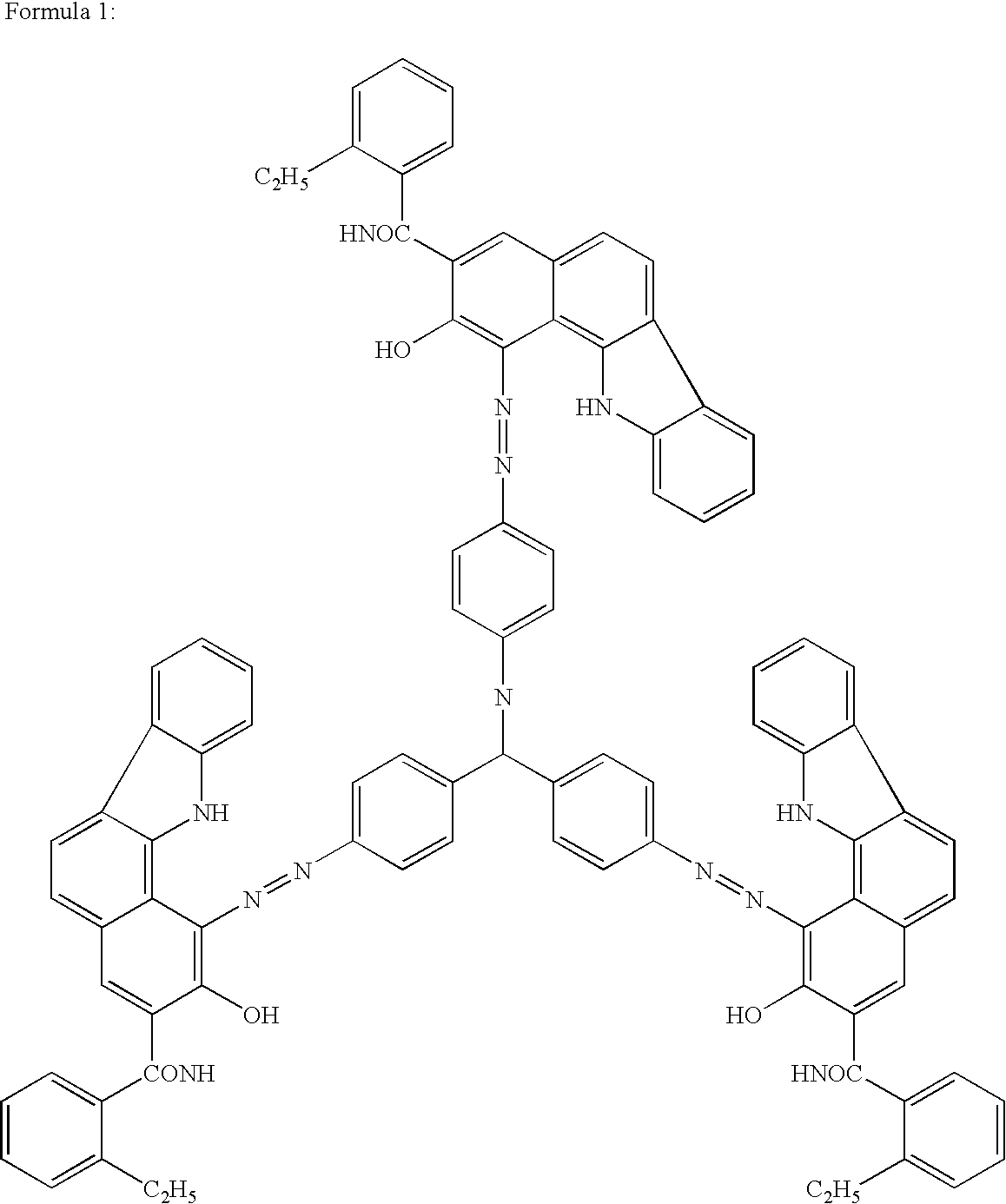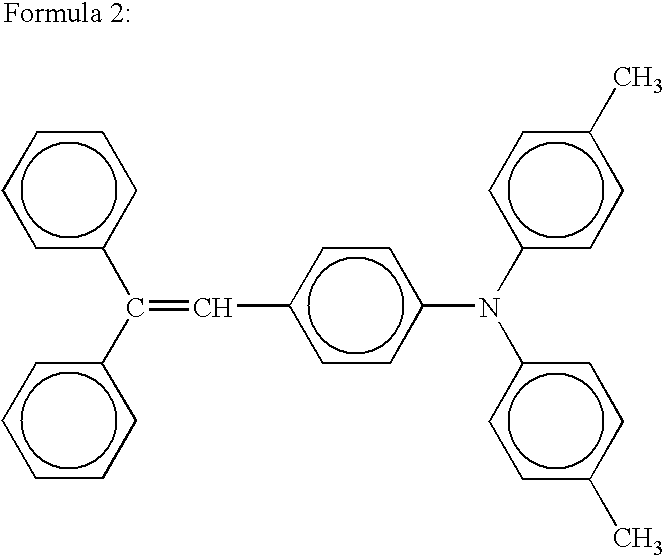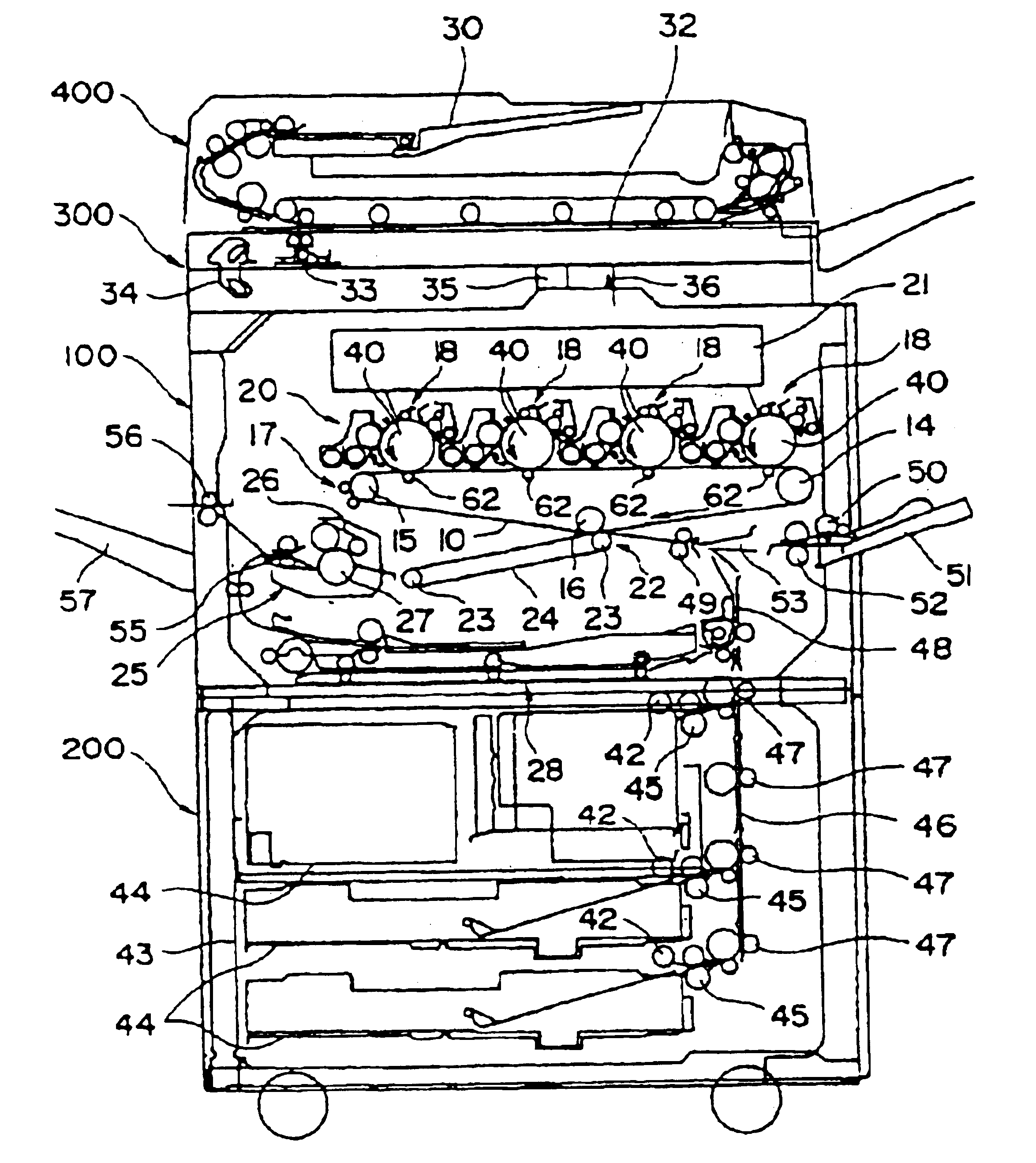Image forming apparatus, and process cartridge for use in image forming apparatus
a technology of image forming apparatus and process cartridge, which is applied in the direction of electrographic process apparatus, corona discharge, instruments, etc., can solve the problems of difficult control of the electric current flowing from the bias roller into the photoconductor, difficult improvement of the speed of image formation, and high equipment cos
- Summary
- Abstract
- Description
- Claims
- Application Information
AI Technical Summary
Problems solved by technology
Method used
Image
Examples
example 2
(EX 2)
The charge transportation substance of 3 weight parts of the above Formula 2 is added to the coating liquid for the protection layer of the Example 1, and it is considered as the coating liquid for the protection layer. The four electrophotographic photoconductors are produced in a similar manner to the Example 1. They are incorporated in the image forming apparatus of FIG. 1, and the same image evaluation as the Example 1, including the abrasion loss measurement and the coefficient of friction measurement, is performed.
example 3
(EX 3)
The four electrophotographic photoconductors are produced in a similar manner to the Example 2, except having used the titanium-oxide particles for the coating liquid for the protection layer in the Example 2, instead of the alumina particles. They are incorporated in the image forming apparatus of FIG. 1, and the same image evaluation as the Example 2, including the abrasion loss measurement and the coefficient of friction measurement, is performed.
example 4
(EX 4)
The four electrophotographic photoconductors are produced similar tot he Example 2 except having used the silica particles for the coating liquid for the protection layer of the Example 2 instead of the alumina particles. They are incorporated in the image forming apparatus of FIG. 1, and the same image evaluation as the Example 2, including the abrasion loss measurement and the coefficient of friction measurement, is performed.
PUM
 Login to View More
Login to View More Abstract
Description
Claims
Application Information
 Login to View More
Login to View More - R&D
- Intellectual Property
- Life Sciences
- Materials
- Tech Scout
- Unparalleled Data Quality
- Higher Quality Content
- 60% Fewer Hallucinations
Browse by: Latest US Patents, China's latest patents, Technical Efficacy Thesaurus, Application Domain, Technology Topic, Popular Technical Reports.
© 2025 PatSnap. All rights reserved.Legal|Privacy policy|Modern Slavery Act Transparency Statement|Sitemap|About US| Contact US: help@patsnap.com



